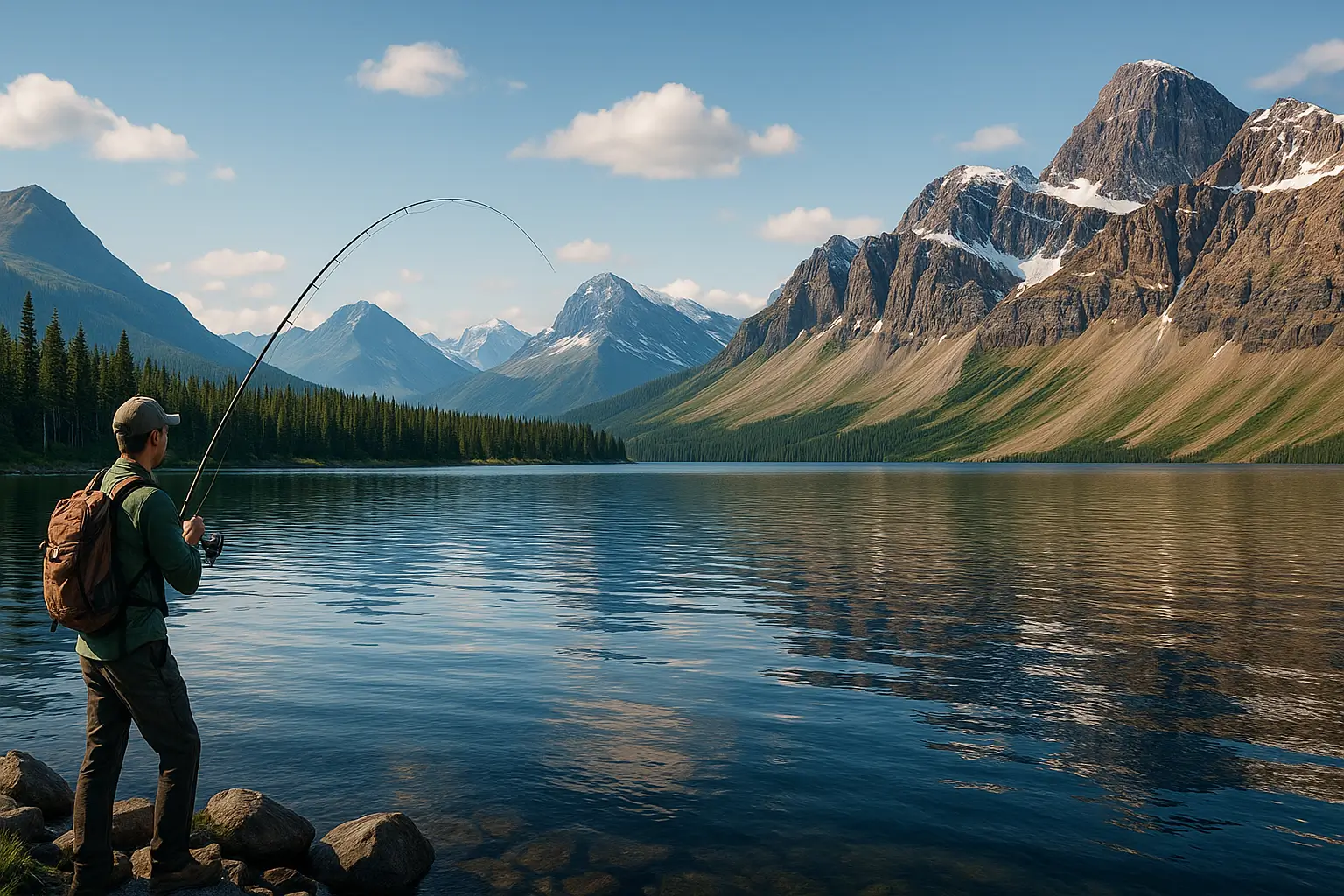Fishing for bass in Texas is a fun outdoor activity. Many lakes and rivers across the state have different kinds of bass you can catch. Texas is a great place for freshwater fishing.
This guide helps you learn about bass fishing in Texas.
In a Nutshell: Bass Fishing in Texas
- You will learn the simple rules for catching bass.
- You will find out about the best places to fish for bass.
- You will get easy tips on how to catch more fish.
- You will understand what gear and license you need.
Estimated reading time: 7 minutes
Do you love fishing? Or maybe you want to start? Bass fishing in Texas offers a great chance to catch some exciting fish. It’s a popular hobby for many people here. Learning a few simple things can make your trip much better.
Simple Rules for Bass Fishing
Texas has rules about how many bass you can catch and how big they must be. This helps keep the fish populations healthy.

- You can keep up to 5 bass in total each day. This includes largemouth, smallmouth, and other types of bass.
- Each bass you keep must be at least 14 inches long.
- You can have twice the daily limit in your possession, but check local rules.
- Some lakes have their own special rules. Always check the rules for the lake you visit before you start fishing. You can find the official rules from the Texas Parks and Wildlife Department.
Best Places to Catch Bass

Texas has many great lakes for bass fishing. Here are a few famous ones:
- Lake Texoma: This lake is big and has different fish. You can find largemouth and smallmouth bass here.
- Sam Rayburn Reservoir: This lake is known for largemouth bass. It has many plants and places for fish to hide.
- Toledo Bend Reservoir: This lake is on the border with Louisiana. It is another top spot for catching largemouth bass.
- Lake Livingston: This lake also has many types of fish, including bass.
How to Catch Bass: Easy Tips
The best way to catch bass depends on the time of year. Fish act differently in different seasons.
- Spring: Bass move to shallow water to lay eggs. Use lures that float on top of the water or soft plastic baits.
- Summer: Bass go to deeper, cooler water. Try using lures that dive deep or heavy jigs.
- Fall and Winter: Bass might move back to shallower areas. Spinnerbaits and crankbaits can work well.
- Check Rules First: Always look up the specific rules for the lake you plan to visit. Limits can change.
- Match Lures to Season: Bass behave differently. Use topwater in spring, deep lures in summer.
- Think About Weather: Wind and rain can affect where bass hide and what lures work best.
What You Need to Fish
You need a few things before you go bass fishing.
- Fishing License: If you are 17 or older, you need a Texas fishing license. This is true if you live in Texas or are visiting. You can learn how to get one from resources like FishingBooker.
- Equipment: A medium or strong fishing rod and reel are good. Use fishing line that is strong enough. Simple lures like plastic worms, spinnerbaits, and crankbaits are popular and work well.
Best Bass Lures by Season
Care for the Environment
Lakes can have problems like bad algae blooms. These can hurt the fish. It is good to release the bass you catch. This helps more bass stay in the lake. It keeps the water healthy for fish and people. The Texas Parks and Wildlife Department shares information about environmental factors that can affect fishing.
Fishing in Community Lakes
Some lakes are called Community Fishing Lakes (CFLs). They have simpler rules to make fishing easier. In these lakes, you can keep five fish total of any kind. You can keep one black bass over 14 inches. These rules help make fishing fun for everyone.
Bass Fishing in Texas Summary
Bass fishing in Texas is a fun hobby for many. You can catch different types of bass in many lakes. Follow the simple rules on size and number.
Use the right gear and know the best lures for the season. Always fish responsibly to help keep the lakes healthy. Enjoy your time on the water!

St. Croix® Mojo Bass Fly Rod
$249.99 CAD
Technically advanced, yet affordably priced; lightweight and easy to handle—perfect for casting large, wind-resistant flies with moderate-fast action and premium components.
Buy NowDisclaimer: I may earn a small commission if you purchase through my link, at no extra cost to you.
Your Questions About Bass Fishing in Texas Answered (Simply)
What is the daily limit for bass in Texas?
How long must a bass be to keep it?
Do I need a fishing license in Texas?
What are the best lakes for bass fishing in Texas?
What lures work best for bass?
What is catch and release fishing?
Are there special rules for some lakes?



